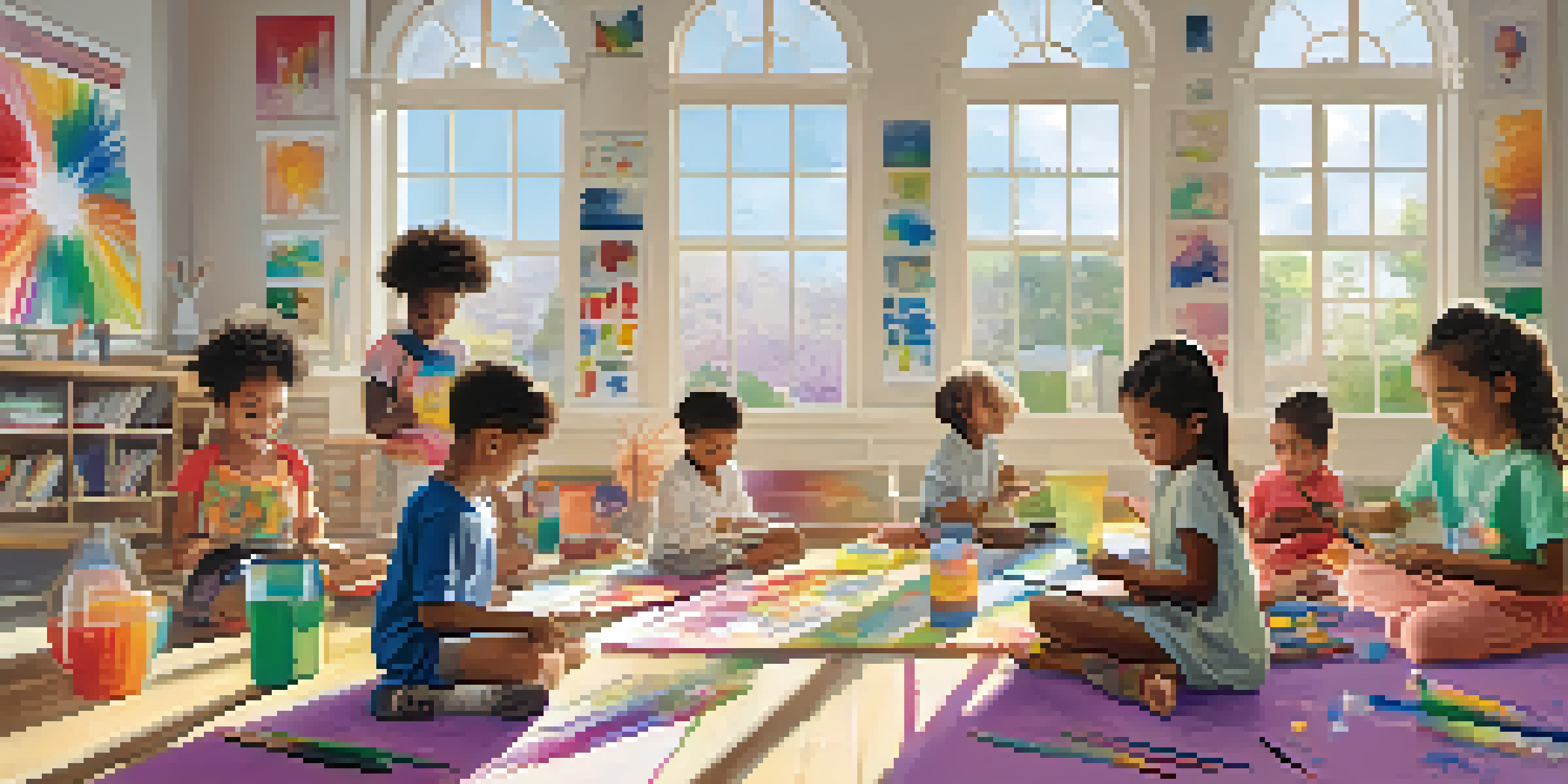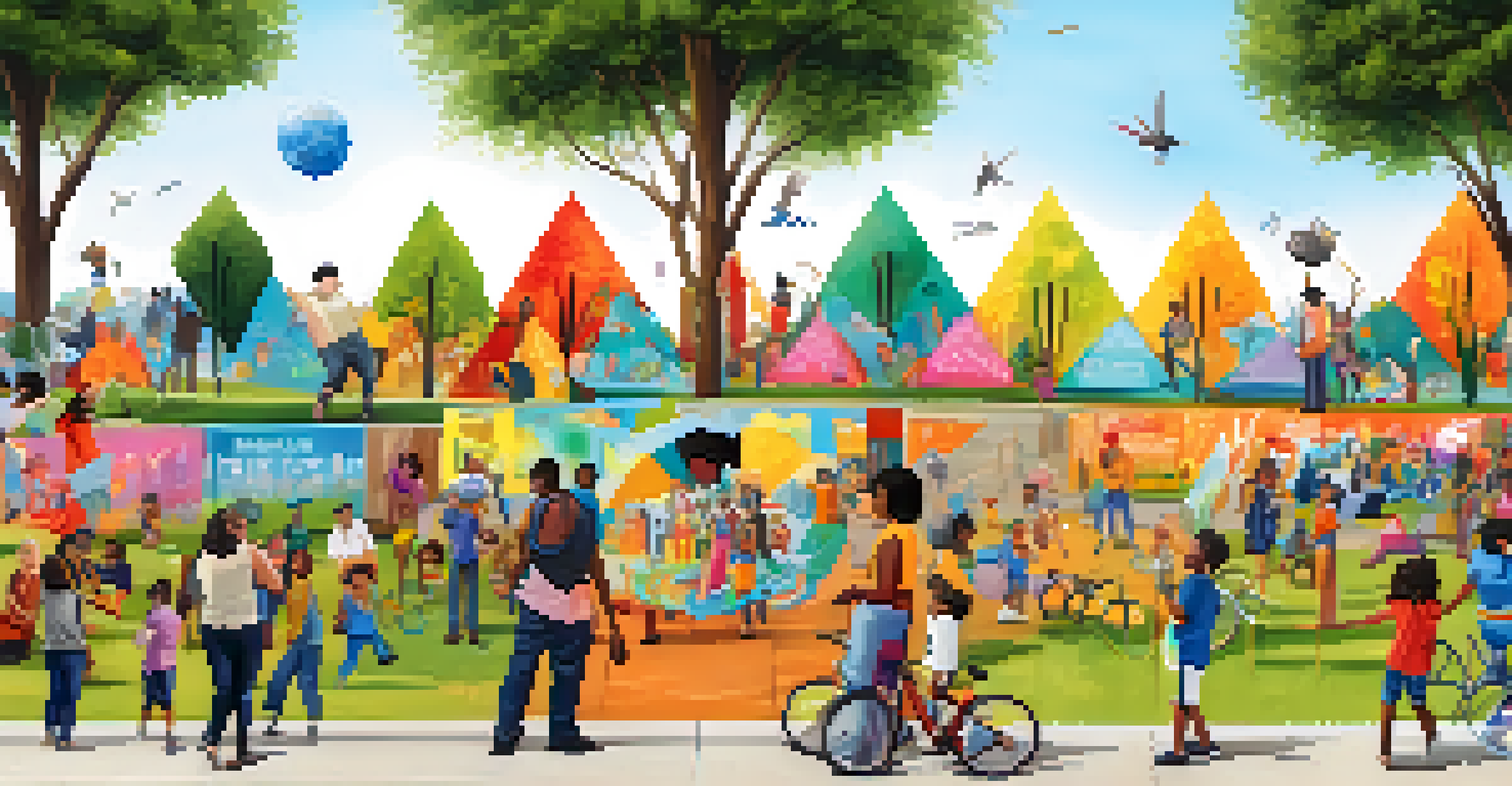Art Therapy: Innovative Practices in Healing Through Creativity

Understanding Art Therapy: A Creative Healing Approach
Art therapy blends the creative process of making art with traditional therapeutic techniques. It allows individuals to express feelings that may be difficult to communicate verbally. By using various art forms, clients can explore their emotions and experiences in a safe and supportive environment.
Art is the most beautiful of all lies.
This therapeutic practice is grounded in the belief that creative expression can be a powerful tool for healing. For many, the act of creating can serve as a release, helping to reduce anxiety and depression. It encourages self-discovery and personal growth, making it a unique and effective form of therapy.
Art therapy is utilized across diverse populations, from children dealing with trauma to adults facing chronic illnesses. The flexibility of art as a medium means that it can be adapted to fit the specific needs of each individual, making it a truly personalized approach to healing.
The Science Behind Art Therapy: How Creativity Heals
Research shows that engaging in creative activities can have profound effects on mental health. Studies indicate that art therapy can lower cortisol levels, the hormone associated with stress, and promote relaxation. This physiological response can lead to improved emotional well-being and resilience.

Moreover, art therapy activates various areas of the brain, fostering connections between the emotional and rational sides. This integration can help clients process their feelings and experiences more effectively. The creative act becomes a bridge, linking thoughts and emotions that might otherwise remain fragmented.
Art Therapy Promotes Emotional Healing
Art therapy allows individuals to express difficult emotions through creative activities, fostering personal growth and reducing anxiety.
As a result, many individuals report feeling a sense of relief and clarity after participating in art therapy sessions. The healing process is not just about creating art; it’s about the transformation that occurs as individuals engage with their inner worlds in a meaningful way.
Innovative Techniques in Art Therapy: Beyond the Canvas
Art therapy has evolved far beyond traditional painting and drawing, incorporating a range of innovative techniques. For instance, digital art therapy uses technology to engage clients, making it accessible to younger generations. Virtual reality experiences can also immerse clients in therapeutic scenarios that enhance emotional exploration.
Creativity takes courage.
Another exciting approach is the use of community art projects, where individuals work together to create a collective piece. This fosters social connection and a sense of belonging, which are essential components of mental health. Engaging in group art therapy can also break down barriers, encouraging openness and shared experiences.
Additionally, incorporating movement and sensory experiences into art therapy—such as dance or sculpture—can deepen the healing process. These methods allow for an even broader range of expression, helping clients connect with their emotions in diverse and impactful ways.
Art Therapy for Children: Nurturing Young Minds
Children often struggle to articulate their feelings, making art therapy an invaluable resource. Through playful creation, children can express emotions related to trauma, anxiety, or everyday challenges. This non-verbal communication helps therapists understand the child’s inner world in a gentle, supportive manner.
Techniques like storytelling through art or using puppets can further engage children, making the therapeutic process feel like play rather than a chore. For instance, a child might draw their family or a favorite animal, providing insight into their feelings and relationships. This imaginative approach can lead to breakthroughs that traditional talk therapy might miss.
Innovative Techniques Expand Access
New methods in art therapy, such as digital platforms and community projects, make therapeutic practices more accessible and engaging for diverse populations.
As a result, many children find art therapy not just healing, but also empowering. They learn to navigate their emotions and develop coping strategies that can last a lifetime, making it an essential tool for emotional development.
Art Therapy for Adults: Rediscovering Self-Expression
For adults, art therapy offers a unique space to rediscover self-expression and process complex emotions. It can be particularly beneficial for those dealing with issues such as grief, loss, or chronic stress. Engaging in creative activities provides a constructive outlet for feelings that might otherwise feel overwhelming.
In adult art therapy, clients might explore various mediums, from painting to collage, allowing them to find their preferred form of expression. This exploration can lead to unexpected insights and a deeper understanding of oneself, fostering personal growth. The therapeutic relationship with the art therapist also plays a crucial role in guiding this journey.
Moreover, art therapy can help adults cultivate mindfulness, as the focus on creation encourages being present in the moment. This practice not only enhances emotional well-being but can also improve overall mental health, making it a valuable tool for anyone looking to enhance their quality of life.
Art Therapy in Healthcare Settings: A Holistic Approach
Art therapy has found a vital role within healthcare settings, complementing traditional medical treatments. For patients facing serious illnesses, engaging in creative expression can provide relief from the stress and anxiety associated with their conditions. It allows for emotional processing in a holistic manner, addressing both the mind and body.
In hospitals, art therapy programs have been shown to improve patients’ mood, reduce pain perception, and enhance overall quality of life. For example, art therapy can help children cope with the fear of medical procedures by giving them a way to express their feelings and concerns creatively. This approach fosters resilience and a sense of control during challenging times.
Art Therapy Benefits All Ages
From children to adults, art therapy provides a supportive space for emotional expression, helping individuals navigate their feelings and enhance their well-being.
Additionally, art therapy can support caregivers and healthcare providers, offering them a creative outlet for their own stress and challenges. By integrating art therapy into healthcare, providers can create a more compassionate and patient-centered environment, ultimately enhancing the healing process for all involved.
The Future of Art Therapy: Expanding Access and Awareness
As awareness of mental health continues to grow, so does the recognition of art therapy as a powerful tool for healing. Efforts to integrate art therapy into schools, community centers, and workplaces are gaining momentum, expanding access to those who may benefit. This shift is crucial in reducing stigma around mental health and encouraging more individuals to seek help.
Moreover, online platforms are making art therapy more accessible than ever, allowing individuals to engage in therapy from the comfort of their homes. Virtual sessions can break down geographical barriers, connecting clients with therapists who specialize in their needs. This flexibility can be particularly beneficial for those with busy schedules or mobility challenges.

With ongoing research and advocacy, the future of art therapy looks promising. By continuing to promote its benefits and expand access, we can ensure that more people discover the healing power of creativity in their lives.